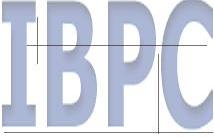Here With You
by Laurel K. DodgeThe Writer's Block
First Place, April 2010
Judged by Fiona Sampson
Unlike the beloved dog, the dead father is not buried
in the backyard; the backyard where the beloved
dead dog buried tooth-ruined soup bones and remnants
of rabbits. What comes undone, what comes un-sewn,
can be pieced or stitched back together; but you know
it is never whole. A hole is a hole is a hole. Whether
filled with the embalmed remains of a grandmother
or the stiff body of a dog rescued from the pound,
wrapped tenderly in a raggedy blanket you had no use
for anymore. You thought you had no use for mourning.
You packed your grief in a suitcase and stuffed it deep
in a closet. Years later, now, on this unremarkable
day in February, you discover the phantom luggage.
Unzipped, the contents fall out like so much viscera,
strange and almost unidentifiable: Stones from the ocean,
chalky seashells, antlers of driftwood. And just like that,
loss comes back to you strong, as sweet and sorrowful,
as wet and cold as your beloved dead dog’s nose pressed
into your hand, not asking, not begging, just asserting
what you forgot, yet always knew: I am here with you.
This remarkable poem encapsulates itself – and the loss which is its theme. It does this partly through repetition, which is used throughout. Even the first three lines have “the beloved dog... the beloved / dead dog”, which becomes “the stiff body of a dog” and returns to the “beloved dead dog’s nose”. It also does it by starting with a parting of the ways – “Unlike the beloved dog, the dead father…” and closing with a re/unification “I am here with you”. And it also does it through the complete conviction at level of diction and in the way one idea builds upon the previous one, to make an absolutely necessary whole. Quietly, in passing, the poem gives us a great deal of detail (“wrapped tenderly in a raggedy blanket you had no use / for anymore”) and several separate bereavements (there is also “a grandmother”). Yet the way grief accumulates, and its odd connective logic, is shown not told. A moving, beautiful poem. --Fiona Sampson

